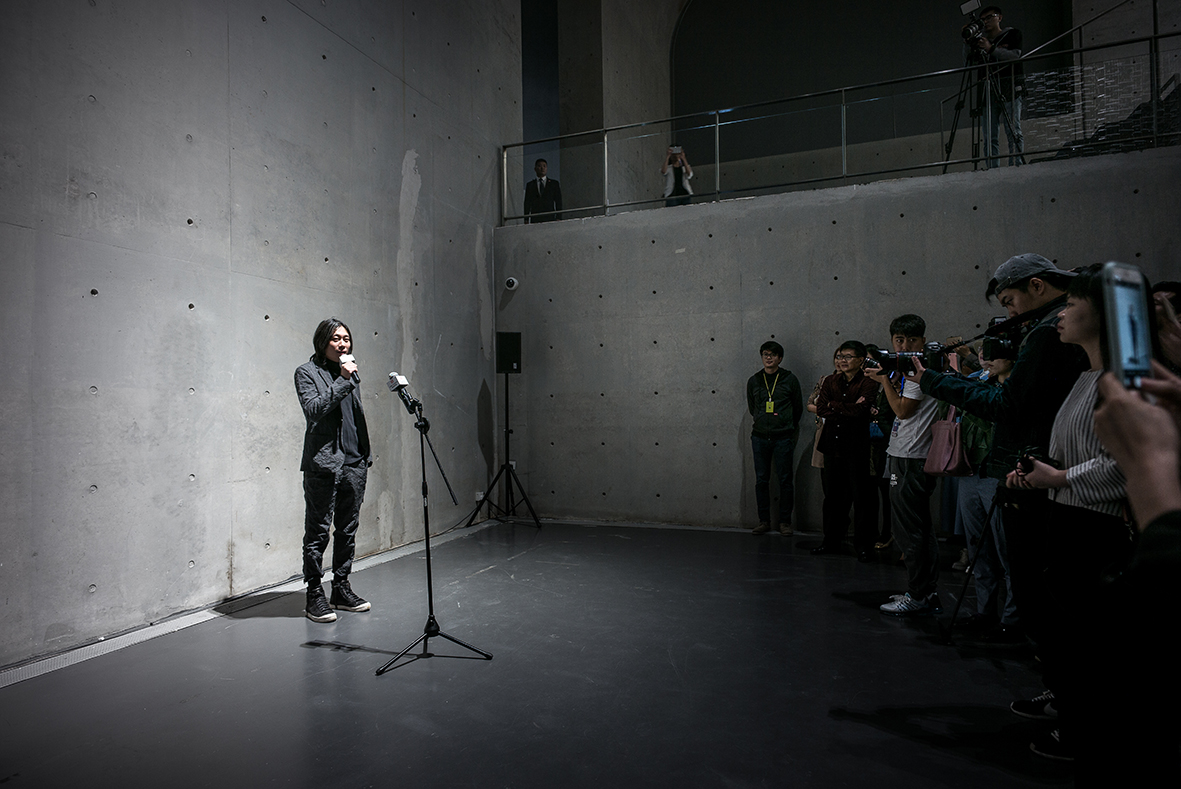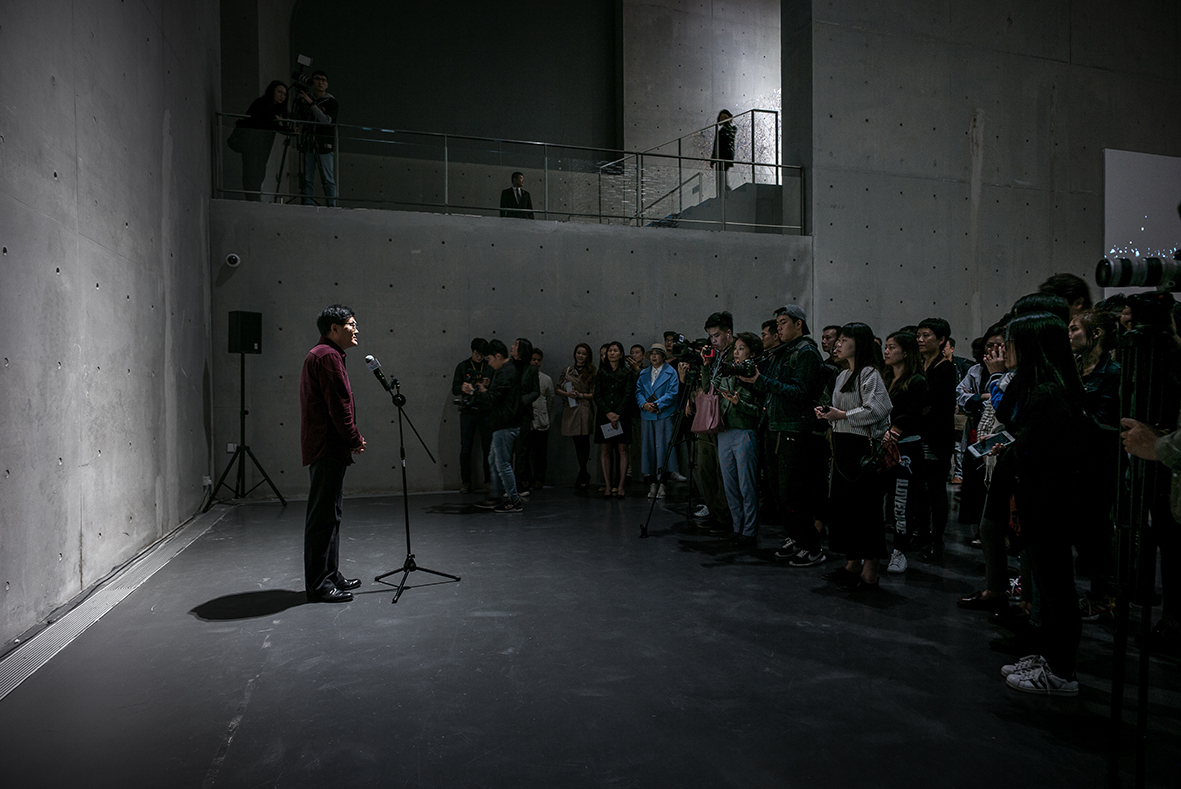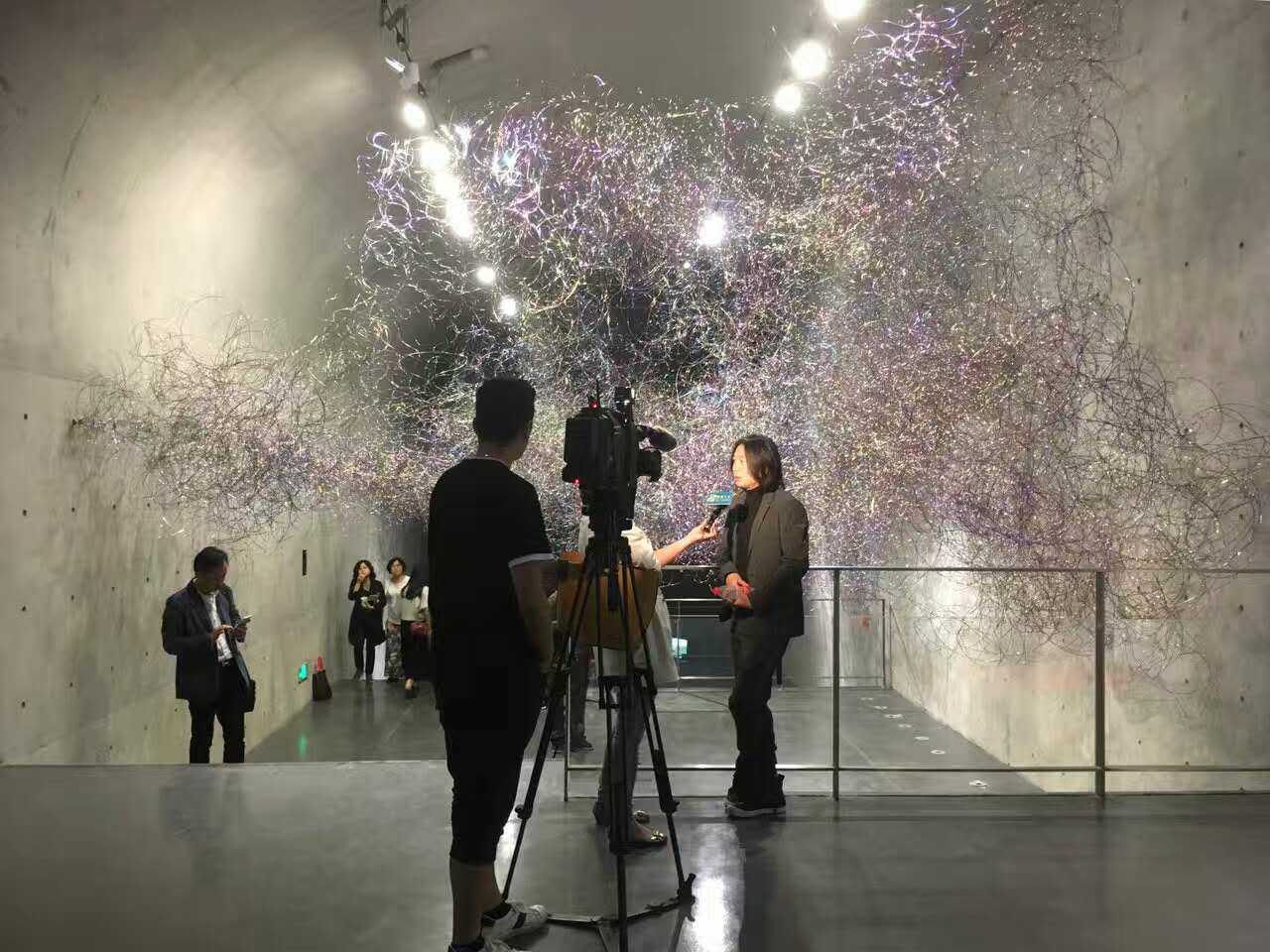郑路大型个展《耳且》于上海龙美术馆开幕

耳且/郑路
Re-sist-ance/Zheng Lu
策展人:吕澎
Curator: Lv Peng
开幕式:2016年10月27日(周四)
下午4:00—7:00
2016年10月27日—12月21日
Opening: Thursday, October 27, 2016, 4:00 –7:00 pm
Duration: October 27, 2016 – December 21, 2016
龙美术馆(西岸馆) | 上海市徐汇区龙腾大道3398号
Long Museum (West Bund), No. 3398, Longteng Avenue, Xuhui District, Shanghai



郑路首次于上海的大型个展《耳且》于2016年10月27日于上海龙美术馆西岸馆呈现,展览展出2016年全新创作的8组作品。
"耳且"一词,取"阻"字的左耳刀偏旁和右"且"字组合而成。“阻”取“阻力”之意,即妨碍物体运动的作用力及阻碍事物发展或前进的外力。阻力在一般语境里等同于障碍。如梁启超所言:“天下一切事悉有阻力,阻力悉去,百事毕举矣。”“耳且”这个新造词正如其发音一样,并列递进生成另外一层语义,在障碍之中探知阻力的美学。
郑路自2015年台北当代美术馆个展《潮骚》和北京芳草地当代艺术馆《唯止》开始进入到更为具有挑战性的阶段,他开始寻求调动更多的媒介和材料。转注、假借、指事、会意、形声、象形,笔画从来都不是孤立的物质,而汇入了语义和图像的海洋。
郑路的造像系统亦是如此,所有孤立的物质、形象、符号、逻辑都借由他者而获得转化,真而幻、幻而真,都不可遏制的朝向它的对立面而转化。
在本次个展《耳且》中,艺术家开始更多的讨论时序、空间和变迁,从这个角度,关于造像的诗歌逐渐开始向关于造像的哲学转化:他想解决的课题是将之前一直纠缠于他的感性处理与观念设置的冲突抛之度外,让自己内心矛盾的叙述更为自由、更为解放地表露出来:人类的日常或者我们所理解的一般世界没有什么是清晰与能够断定的;任何一处风景都具有其自在的合理性,你可能遭遇到“自然”的风景,但那很可能仅仅是一种幻觉。某种宇宙的力量弥漫在我们的周围,你会感到恐惧,或者兴奋,然而,如果我们脱离这个社会,如果我们还试图回到当初的情景,你就会遭遇到理想主义的磨难:回到当初与走向未来都是悲剧。
郑路,1978年生于内蒙古赤峰市,曾分别就读于鲁迅美术学院雕塑系及中央美术学院雕塑系。2005年获得L.V.M.H.青年艺术家大赛奖学金在巴黎国立美术学院学习。郑路在近几年来不断的个人实践当中逐渐构建和完善了自己的艺术逻辑和语言系统。他将物质、文字、水、时间、空间等概念纳入自成体系的观念构架中,形成了个人独特的语言表现方式。同时也借此来暗喻生命状态的多样性和可能性,及如何应对自然、自性和自我之间的关系。


“Re-sist-ance”, Zheng Lu’s first large-scale solo exhibition in Shanghai, comprising eight of his new works produced in 2016, will be held at Long Museum (West Bund) in Shanghai on October 27, 2016.
The title "耳且", pronounced “erqie”, is the morphological composition of "阻" , meaning “resistance” in Chinese, in other words, any mechanical force that tends to retard or oppose motion. In general, “resistance” is synonymous with “obstacle”, as was said by Liang Qichao, a renowned Chinese scholar during the late Qing dynastyand the early Republic of China, “Everything in this world meets resistance, and we call it a success when resistance is crushed.” Moreover, this coinage, homonymous with “and” or “also” in Chinese, generates a new sense of parallel and progression, turning therefore the exhibition into a kind of exploration into the aesthetics of resistance.
“Shiosai”, Zheng’s solo exhibition at MOCA, Taipei, in 2015, and “Transition” Zhenglu’s solo exhibition at Parkview Green Museum marked a new stage in his art. During his search for new media and material for art, he found that, the six categories of Chinese characters, i.e., self-explanatory characters, pictographs, pictophonetic characters, associative compounds, mutually explanatory characters and phonetic loan characters, give each stroke the opportunity to participate in the semantic and imagery fields, rather than being something isolated. So does his image-making system. All the seemingly isolated material, images, symbols and logic, transform one another to make something virtually real whose constituents keep converting themselves into their opposites.
This solo is more concerned with the time series, space and change, which explains the artist’s effort to move from the poetics of image-making to the philosophy of image-making. Aiming at freeing himself from the conflict between the sensory experience and the concepts, he heads for liberal expression of the inner conflict. Nothing about human life or the world is absolutely clear or definite, and any landscape or spectacle has its reason of being, so you may run into a “natural” landscape, but it may well be an illusion only. Emerged in the pervasive universe, we experience terror or excitement, but we would still suffer as an idealist if we go back to our origin--- it is doomed to be a tragedy, whether we return to the past or go toward the future.
Zheng Lu was born in 198 in Chifeng, Inner Mongolia. He had a BA and MA from Luxun Academy of Fine Arts (Sculpture Department) and Central Academy of Fine arts (Sculpture Department). In 2005, he won L.V.M.H. Young Artists’ Awards in France, and thus had the opportunity to study in Ecole National Supérieure des Beaux-Arts.
Recent years has seen Zheng gradually setting up and improving his own logic and vocabulary in art on the basis of practice and experiment. Substances, s, water, time, space, and a number of concepts are included into his aesthetic world to form an organic whole, from which derives his unique renderings. In the meanwhile, his works are also metaphoric of the diversity and the possibility of life, as well as of our response to the relation between nature, the self, and the ego.




